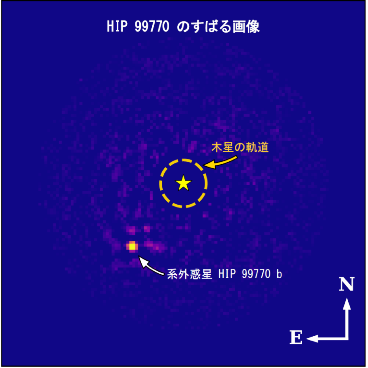Joint Press Release
Motohide Tamura, Professor, Department of Astronomy)
More than 5,000 exoplanets have been discovered so far, but most of them were discovered through indirect observations, and only about 20 of them were directly imaged by direct imaging, which captures light from exoplanets directly. This is because direct imaging has so far been used to search for exoplanets blindly by observing a large number of objects, because it is not possible to narrow down the target of observation.
However, the advent of satellites that can precisely measure the positions of fixed stars on the celestial sphere has overcome this situation. Using precise astrometry data from the Gaia satellite launched by the European Space Agency and its predecessor, the Hipparcos satellite, it became possible to obtain indirect evidence for the existence of a planet from the wobble (accelerated motion) of a star and directly image promising objects using large telescopes and super-compensation optics. This is the first time that a direct imaging method has become possible using large telescopes and super-compensation optics.
An international research team led by researchers from the University of Tokyo’s Graduate School of Science has now successfully discovered a new exoplanet, HIP 99770 b, by direct imaging using this technique and the Subaru Telescope’s supercompensating optics instrument (see Figures 1 and 2). This exoplanet orbits the star HIP 99770, which is 130 light years away in the constellation Cygnus and is visible to the naked eye with an apparent brightness of 4th magnitude, 17 times the distance between the Sun and Earth. By taking into account the stellar wobble data, the mass of the exoplanet was estimated to be 15 ± 1 times the mass of Jupiter, which is a much more precise estimate for an exoplanet found by direct imaging.
Planets discovered with this technique are ideal for demonstrating the high-contrast observations that will be made with the ground-based Very Large Telescope in the future. It is also a promising technique for imaging Earth’s twin in the future.


The results of this research were published as Currie et al. “Direct Imaging and Astrometric Detection of a Gas Giant Planet Orbiting an Accelerating Star” in the US The results of this research were published in the U.S. scientific journal Science on April 13, 2023.
Professor Motohide Tamura of the Department of Astronomy participated in this research.
For more information, please visit the website of NAOJ Hawaii Observatory and NAOJ. The results are also available at the Center for Astrobiology.

